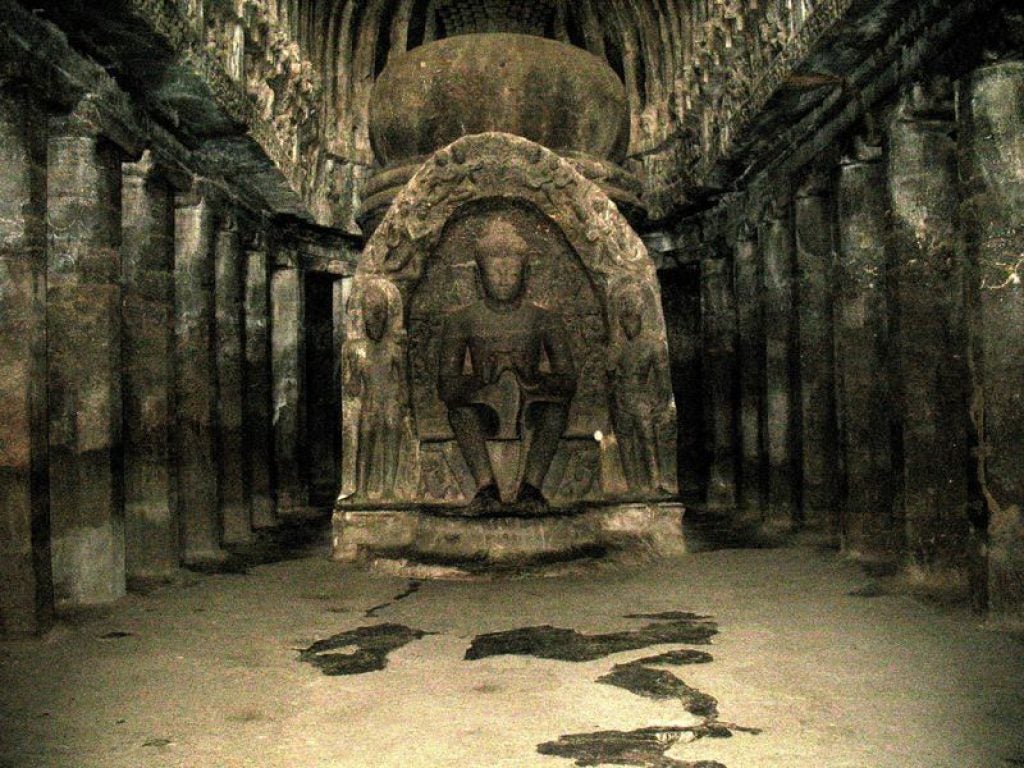The Ellora Temple Complex
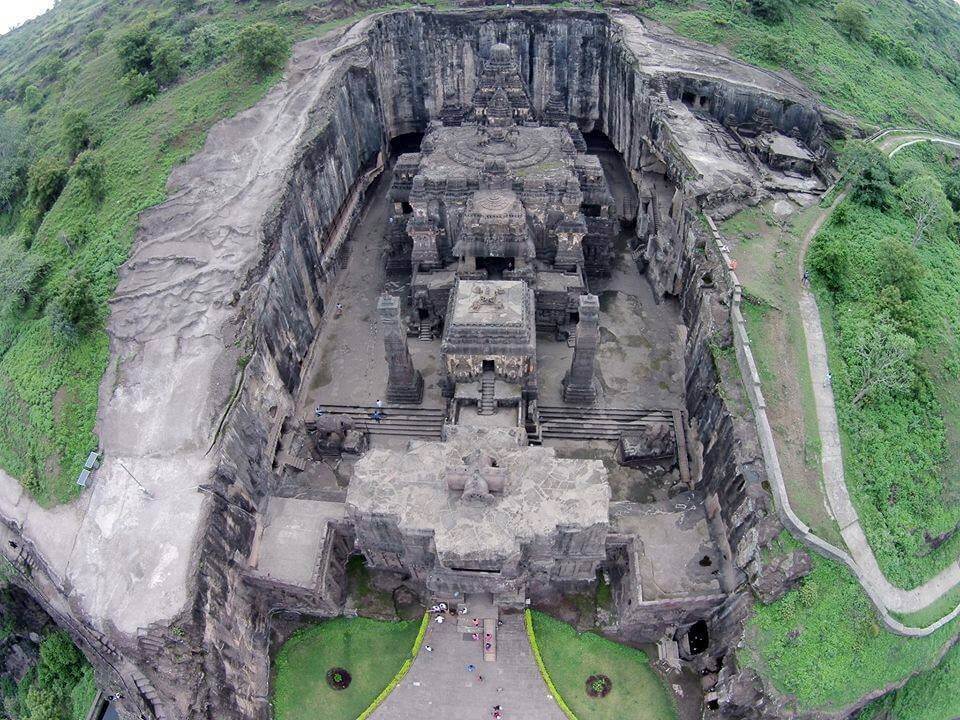
The Ellora Temple complex is located in the state of Maharashtra.
Since ancient times, it was at the same time the pilgrimage center of 3 great religions: Buddhism, Brahmanism, and Jainism.
It is thanks to this peculiarity that we owe the artistic flourishing that makes it one of the major places of rock architecture in the entire Indian subcontinent.
In fact, at this locality, there is a complex of 34 caves used as temples and directly carved into the rock.
The construction of Ellora Temple covers a period ranging from the 5th to the 10th century.
The caves numbered from 1 to 12 belong to the Buddhist tradition, those from 13 to 29 to the Chalukya art of the Brahman and Hindu tradition (VII-IX century), the last ones from 30 to 34 (IX-X century) are Jainist.
Among the Buddhist group of particular importance is the vihara Do Thal and Tin Thal and the chaitya of Visvakarma.
Of the second group stand out the Ravanaka-Khai and Dasavatara temples dedicated respectively to Shiva and Viṣṇu but above all the famous Kailasanatha temple (or Kailasha) dedicated to Shiva which, built with a single block, makes the sacred Mount Kailash, home of the God, visible to men.
The Kailasha Temple
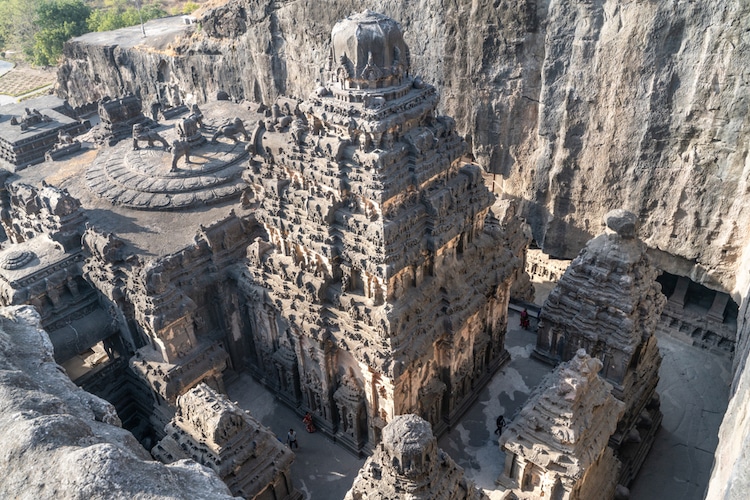
The Kailasha Temple is the largest rock-cut temple of India and one of the most incredible megalithic works in the world.
As a matter of fact, despite its incredible size and marvelous craftsmanship, it was directly carved out of a single piece of rock.
To give an idea of the proportions of the whole complex, the top of the structure is 32.6 meters (107 feet) high above the level of the court below.
The temple is densely adorned with religious figures starting from the entrance, where there are Shaivaite deities on the left and Vaishnavaities deities on the right side.
Alongside the courtyard, which measures 82m x 46m at the base, was carved a columned arcade adorned by huge sculpted panels and alcoves containing enormous sculptures of a variety of deities.
Bridges of stone suspended in the middle of the air originally connected these galleries to the central structures of the temple, although they have now fallen.
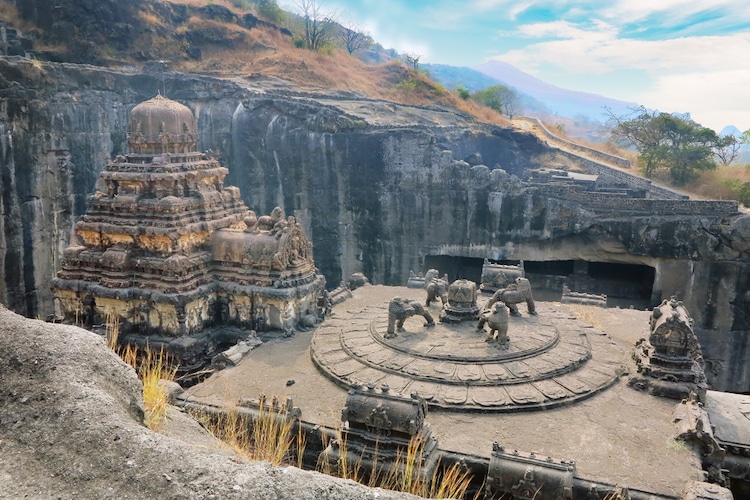
The central shrine, complete with pillars and a huge stone lingam at its center, is dedicated to Shiva.
According to tradition, Shiva’s sacred bull, Nandi, sits on a porch in front of this temple.
Its base has been carved so that it gives the impression that elephants are holding the whole structure on their back, while the base of the temple hall is tightly carved with scenes from two major Hindu sacred texts, the Mahabharata and the Ramayana.
Although the temple lacks dedicatory inscriptions, its construction is generally attributed to Krishna I, an eighth-century Rashtrakuta king, because of two epigraphs.
One, known as the Vadodara inscription, can be found on a copper plate belonging to the ruler Karkaraja II (circa 812-813 CE) mentioning “Krishnaraja” as the patron of Kailasanatha, and a Shiva temple at Elapura (Ellora).
The inscriptions state that even the gods and the architect were amazed by the temple built by the king.
The other inscription would be a grant of Govinda Prabhutavarsha, which also appears to credit the same king Krishnaraja with the construction of the temple.
Therefore, most scholars agree that these could refer to the Kailasha Temple.
However, given that these epigraphs are not physically connected to the caves or the temple itself and they do not date to Krishnaraja’s reign, the attribution of its construction to this king can’t be completely certain.
Not only, but some archeologists also agree that the many different architectural styles of the temple, together with the incredible size of it, might indicate the fact that its construction was completed under different eras and kings, and that we can’t be certain about when exactly the megalithic work began.
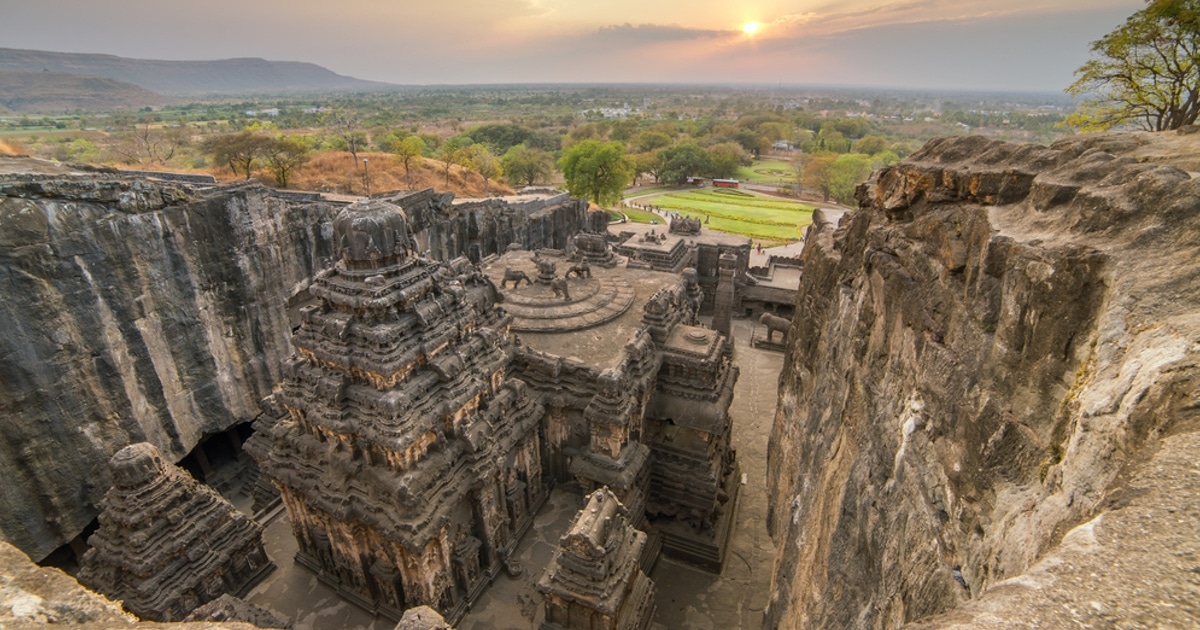
The Buddhist Caves
Initially, it was thought that Buddhist caves were among the oldest structures at the Ellora Temple complex, built between the 5th and 8th centuries in two phases: the first phase (400-600) for caves 1 to 5 and the second (mid-700-mid 800) for caves 6 to 12.
Now, however, for modern scholars, it is clear that some of the Hindu caves (27,29,21,28,19,26,20,17 and 14) predate these.
The oldest Buddhist cave is Cave 6, followed by 5,2,3,5 (right-wing), 4,7,8,10, and 9.
All the Buddhist caves were allegedly built between 630 and 700.
The best known of the Buddhist caves is Cave 10, a chaitya (chandrashala) or ‘Vishvakarma’, commonly known as the “Carpenter’s Cave”.
Beyond its entrance, on several floors, there is a stupa, also known as a chaitya, whose ceiling has been engraved to make it look like it was made of wooden beams.
At the heart of this cave is a 4.5-meter statue of a seated Buddha in a praying position.
